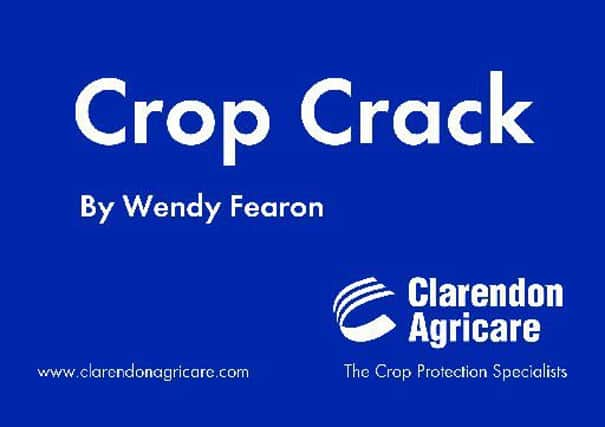Temperature rise a boost for all crops


In spring barley and spring wheat an early application of SELON increases root development and the numbers of surviving tillers which will improve crop establishment and yield. Because of the spring crops more rapid progression through the growth stages than the winter crop, the growth regulator must be applied very early to maximise the suppression of apical dominance and therefore divert nutrients and growth to promote secondary tiller development.
Optimum timing for barley is from the second expanded leaf stage to beginning of tillering, GS12-21 whilst in wheat the optimum timing is slightly later, five leaf to mid tillering, GS15-24. This treatment also gives a consistent straw shortening effect in wheat, but not in barley. Grass and weeds have been under stress up to now and where silage is still some weeks away there is an opportunity to apply herbicide.
Spring Barley
Advertisement
Advertisement
To minimise the effects of competition on the crop and optimise the level of weed-control, the herbicide application should be carried out sooner rather than later, once all the weeds have emerged but are still small, and before they begin to compete with the crop for nutrients and light.
Product choice depends on the weed type and size present and crop growth stage. Broad leaved wise, Sulfonyl-urea (SU) herbicides will likely be the starting point, controlling a wide range of weeds and are very safe to the crop. However they must always be tank-mixed with another BLW herbicide to control SU resistant weeds (chickweed) and those weeds not controlled by the SU’s (cleavers, fumitory and fat-hen).
Ideal partners are Compitox,Minstrel and Starane. I have found over the last couple of years the Spitfire, Foundation mix to be the belt and braces for weed control in spring cereals. Each of these partner options are very tank mixable, and other products such as SELON and MAXMAN can also be safely added.
Where the range of BLWs present are limited to chickweed, redshank, fat hen, fumitory and day nettle, the hormone mixture products will work well without the need to tank-mix, but must be applied by GS31. Where the likes of field pansy, forget-me-not, speedwells and corn-marigold are also present however, sulphonyl-ureas products will improve control. Spring barley, spring wheat and spring oats undersown with grass and clover should be treated with TRIAD and where clover is not important MIRCAM PLUS should be applied. If seedling docks, thistles and buttercup are also problem weeds, SPRUCE must be added to the TRIAD to improve control of these also. SPRUCE is 2,4DB, a clover safe hormone type herbicide.
Winter Wheat
Advertisement
Advertisement
In wheat the T2 should be applied during the emergence of the flag leaf, GS37-39. Of all treatments, this flag leaf timing is the most responsive to yield and therefore products used should reflect this.
Against a background of high disease pressure and declining kickback activity from core chemistry, the T2 timing becomes even more critical to ensure effective product performance. Managing resistance and maintaining reliable disease control now means using a range of different actives over the course of the growing season. Therefore ensure there are a number of different modes of action in the tank at every treatment, that way maximising the range of strains sensitive to the mix.
SDHIs are now regarded as essential partners to triazoles to maximise the yield of all but the poorest crops, adding both to curative as well as preventative activity. Having a completely different mode of action to the triazoles, they will improve the kickback activity of the treatment, as well as widening the spectrum of Septoria strains controlled. Because it provides multiple modes of activity acting preventatively on Septoria and has no known resistant strains to the disease, chlorothalonil should also be included in all well timed T2 programmes to provide some control of those strains now showing resistance to triazoles and even SDHIs.
Potatoes
With planting progressing well to date, this year’s crop is going in in almost perfect conditions right across the Province. Drills are moist and with increased temperatures rapid emergence of both crop and weeds will occur. Therefore growers should be planning weed control now, taking good advantage from the moist soil conditions.
Advertisement
Advertisement
Most weed control programmes are based on residual products ie products that are taken up through the soil, and are therefore very dependent on sufficient soil moisture to work effectively. Soil conditions are ideal therefore at the moment, moist enough on the tops of the drills to allow the herbicide to be taken into the soil and taken up by the germinating weeds.
Contact products such as RETRO, ROUNDUP and TITUS may be applied. All require the inclusion of a residual partner to maintain clean drills up to the time of the crop canopy closing the drills. Residual products are DEFY, SENCOREX, AFALON and GAMIT.
All potato herbicides carry timing restrictions and some namely SENCOREX have varietal restrictions and it is therefore important to seek advice on the best product choice.